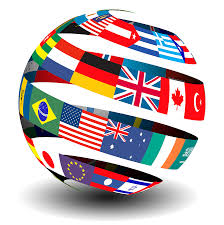September 30th is the date on which translators across the globe celebrate International Translation Day, and it is also the feast day of St. Jerome. Considered the patron saint of translators, St. Jerome is known for translating the Bible into Latin. Launched officially in 1991 by the International Federation of Translators, International Translation Day an opportunity for translators everywhere to promote their profession, show solidarity with their colleagues worldwide, and display pride in a profession that is increasingly taking center stage in this era of globalization.
It’s also a day to reflect on the many changes in the work of translators and interpreters over the last several decades. From handwritten translations that were typed up on manual typewriters and sent via courier or ordinary mail, to electronic documents created using a word processor with input via electronic keyboard or voice recognition program and emailed in a matter of seconds, the changes in the profession are enough to make a veteran’s head swim…not to mention the virtual dictionaries and other references, online communities, and instant consultation of colleagues across the globe that have made the work of translating both faster and easier.
And that’s good news, because the demand for translation and interpretation is growing faster than ever. Translators and interpreters are key factors in growing businesses globally and are also becoming increasingly important in nonprofit and social aid projects, including providing urgently needed translation and interpretation services during the refugee crisis taking place in the Middle East and Europe.
The work of translators and interpreters often goes unacknowledged by the wider world, and today is a great opportunity to draw attention to the growing importance of this time-honored profession across borders and across industries.
And don’t forget to give yourself a pat on the back; after all, YOU know just how hard you work!
Happy Translation Day!





